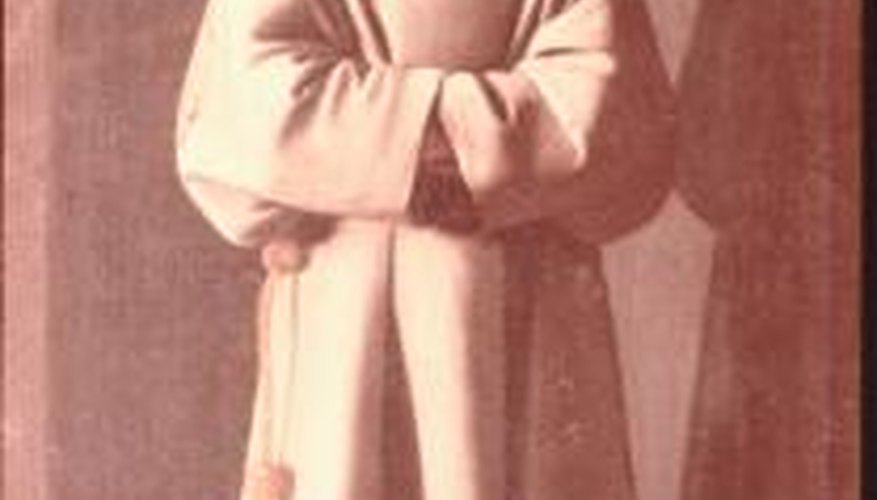The medieval period lasted from roughly the fifth to the 15th centuries. During this period, Christianity spread across Europe. Priests and monks were the church's representatives to the community and, over time, they began to wear distinctive clothing to distinguish themselves from laypeople. Clerical clothing evolved over time as styles and church regulations changed.
Origins
Early Christian priests did not wear clothing that differed very much from everyday dress. However, as fashion changed following the collapse of the Roman Empire in the fifth century, the clergy tended to follow older styles. The church began to regulate ecclesiastical dress as early as the sixth century, when the Council of Braga ruled that priests were required to wear a tunic reaching the feet, in contrast to the trousers or bare legs of laymen.
Clerical Dress
Because it was regulated by the church, the basic form of ecclesiastical dress remained roughly consistent. A long tunic called an alb was the basic garment. This could be cinched around the waist with a simple belt. When saying mass, an outer garment was worn over the alb, either a long-sleeved tunic called a dalmatic, or a sleeveless cloak called a chasuble. A long strip of fabric called a stole, worn over the shoulders, completed the outfit. In daily life, canon law required priests to dress in plain and sober clothes. In the 13th century, priests in England were required to wear a hooded cape called a cappa clausa.
- Because it was regulated by the church, the basic form of ecclesiastical dress remained roughly consistent.
- When saying mass, an outer garment was worn over the alb, either a long-sleeved tunic called a dalmatic, or a sleeveless cloak called a chasuble.
Monastic Dress
Monks wore a simpler habit than priests, without the elaborate ritual vestments used in saying mass. The exact habit varied according to the monastic order, but the basic dress consisted of a long robe, usually of wool, with a hood and a simple belt. Monastic orders were sometimes identified by the colour of their robes. Because of this, the Dominican order were sometimes known as the "black friars," while the Franciscans were known as "grey friars."
- Monks wore a simpler habit than priests, without the elaborate ritual vestments used in saying mass.
Episcopal and Papal Dress
The formal robes of bishops and other church officials were even more elaborate than the liturgical vestments of priests. Bishops often wore a heavy silk cape called a cappa, accompanied by a tall, pointed hat called a mitre. Episcopal vestments could be elaborately decorated, and their robes and crooks, or crosiers, were embellished with gold and precious stones. The office of an archbishop was represented by a narrow, scarf-like garment called a pallium, which is often depicted worn loosely around the neck. The most elaborate liturgical dress was worn by the popes and included, from the 12th century onward, a tall crown called a tiara.
- The formal robes of bishops and other church officials were even more elaborate than the liturgical vestments of priests.
- The most elaborate liturgical dress was worn by the popes and included, from the 12th century onward, a tall crown called a tiara.
